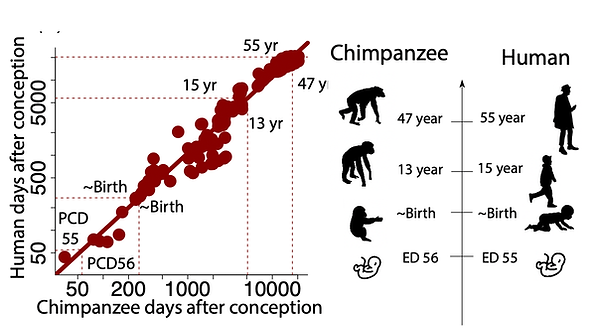top of page
Upcoming Events: Meetings
Charvet Laboratory For Translating Time

The translating time model integrates over 1,000 transformations to identify corresponding ages across 18 mammalian species. The user can find corresponding ages across any studied species. We are working to increase the utility of this valuable resource. Here you can see we collect time points in humans and chimpanzees, which we use to tell you how old we are in chimpanzee years:

bottom of page